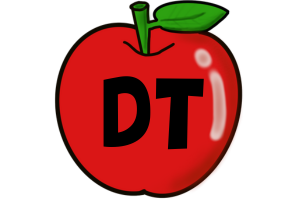Introduction:
Motivating students to learn and actively participate in the classroom can be a challenging task, particularly in the context of the COVID-19 pandemic. To enhance student engagement and foster a conducive learning environment, many teachers have turned to student reward systems. These systems utilize positive reinforcement to promote desirable behaviors and provide an incentive-based learning experience. In this article, we will explore the advantages and disadvantages of student reward systems and delve into various strategies for effectively implementing rewards in the classroom.

The Need for Student Reward Systems: Teachers continually seek effective teaching strategies to improve the quality of education and create engaging learning experiences for students at all levels. One such approach is rewards-based learning, which encourages positive behavior change through intrinsic and extrinsic rewards. Intrinsic rewards involve intangible recognition or achievement, such as applause for answering a question correctly. Extrinsic rewards, on the other hand, are tangible incentives provided by teachers, such as trophies or prizes.
Advantages of Student Reward Systems:
- Encouraging Appropriate Behavior: One of the key advantages of student reward systems is their ability to promote and reinforce appropriate behavior in the classroom. By implementing these systems, teachers create clear expectations and provide students with a sense of structure. When students meet these expectations, they are rewarded, which strengthens their motivation to continue exhibiting positive behaviors.
- Increased Attention and Motivation: Student reward systems effectively capture students’ attention and increase their motivation to actively participate in classroom activities. The prospect of earning rewards, whether intrinsic or extrinsic, provides students with a goal to strive towards. This creates a sense of healthy competition among students, as they seek to outperform their peers and earn recognition for their efforts.
- Enhanced Student Well-being: The implementation of student reward systems contributes to overall student well-being. When students receive recognition and rewards for their achievements, they experience a boost in self-confidence and self-esteem. This positive reinforcement encourages students to develop a growth mindset, empowering them to believe in their abilities and strive for further success.
- Task Completion: Student reward systems serve as a powerful motivational tool to encourage students to complete their tasks, including homework assignments and classwork. The promise of a reward acts as an incentive, providing students with a tangible reason to put in the necessary effort to fulfill their responsibilities. As a result, students become more diligent in completing their tasks in a timely manner.
- Improved Academic Performance: By rewarding students for their efforts and achievements, student reward systems foster a culture of hard work and dedication. When students receive recognition and extrinsic rewards, they are more likely to invest additional effort into their studies. This increased effort often translates into improved academic performance, as students are motivated to excel in their academic pursuits.
Disadvantages of Student Reward Systems:
- Potential for Addiction: One potential disadvantage of student reward systems is the risk of students becoming overly dependent on extrinsic motivators. If rewards are overused or relied upon excessively, students may develop a dependency on external incentives. This can undermine intrinsic motivation and hinder students’ ability to engage in tasks without the promise of a reward.
- Focus on Task Completion over Learning: In some cases, student reward systems can inadvertently shift the focus from deep learning to task completion. When the primary emphasis is placed on earning rewards, students may prioritize completing tasks to obtain the reward rather than focusing on the underlying learning objectives. This can hinder their overall understanding and application of knowledge.
- Devaluation of Rewards: Regular and indiscriminate distribution of rewards can lead to the devaluation of rewards over time. When students receive rewards too frequently or without significant effort, they may lose their significance and impact. This can result in decreased motivation and effort, as students may no longer perceive the rewards as meaningful or worth striving for.
- Jealousy and Clashes: Student reward systems can inadvertently create jealousy and foster a sense of unfairness among students. If certain individuals consistently receive rewards while others do not, it can lead to frustration and unhealthy competition within the classroom. Teachers must ensure that rewards are distributed equitably and provide opportunities for all students to succeed.
- Potential for Control and Manipulation: Although student reward systems are intended to be a positive reinforcement tool, there is a potential for students to perceive them as a form of manipulation or control. If rewards are used excessively or inappropriately, students may feel that their actions are being controlled and lose intrinsic motivation. It is essential for teachers to strike a balance between extrinsic rewards and fostering a sense of autonomy and intrinsic motivation in students.
Precautions to Take When Rewarding Students: To mitigate the potential pitfalls of student reward systems, teachers should implement precautions and set clear guidelines. It is crucial to avoid comparing high-achieving students with struggling students, as this can create feelings of inferiority. Teachers should also refrain from rewarding students for every task or overemphasizing the importance of rewards. It is important to ensure that students understand that learning and personal growth are the ultimate goals, with rewards being a means to recognize and celebrate achievements along the way. Additionally, teachers should avoid creating a dependency on rewards by ensuring that students do not become addicted to receiving them and demanding them as a prerequisite for participation or effort.
Strategies for Rewarding Students in the Classroom:
- Sticker or Point System: A popular and effective strategy for rewarding students is the implementation of a sticker or point system. When students exhibit outstanding work, complete tasks in a timely manner, or demonstrate positive behavior, they earn stickers or points. These visual representations of progress are displayed on a chart or bulletin board, allowing students to see their achievements and compare them with their peers. The accumulation of stickers or points serves as a powerful motivator, encouraging students to continue their efforts and strive for further success.
- Extra Credit Opportunities: Offering extra credit opportunities provides students with the chance to improve their grades after a weaker performance. By completing additional assignments, engaging in further study, or demonstrating improved understanding, students can earn extra credit points. This incentivizes students to invest extra effort into their studies and motivates them to make up for any previous shortcomings.
- Extended Recess Time: Rewarding exceptional behavior or performance with extended recess time can be a highly motivating incentive for students. Recess is a cherished time for students to rest, play, socialize, and recharge. By providing students with extra recess minutes, teachers acknowledge their achievements and offer them an opportunity to enjoy more time for relaxation and play.
- Outdoor Class Activities: Organizing outdoor class activities as rewards can have a profound impact on student motivation. Students spend long hours confined to the classroom, and outdoor activities provide a welcome change of environment. Whether it’s a field trip, nature walk, or visit to a local park, these activities allow students to explore the world around them, engage with nature, and apply their learning in real-life settings. The opportunity to learn outside the traditional classroom setting can ignite students’ curiosity and enthusiasm, leading to increased motivation and engagement.
- Additional Technology Time: Given the prevalence of technology in students’ lives, providing additional time for technology-based activities can be a highly enticing reward. Students can be granted extra minutes to engage with tablets, computers, or other educational technology tools. This reward not only acknowledges students’ achievements but also leverages their interests and familiarity with technology to enhance their learning experiences.
- Quiz Bonuses: Offering quiz bonuses can be an effective way to reward students for their academic achievements and encourage further engagement in class. When students respond correctly to questions or perform exceptionally well on quizzes, they can earn bonus points or marks. These additional points contribute to their overall quiz scores, motivating them to actively participate, study diligently, and strive for excellence.
- Raffle Tickets: Introducing a raffle ticket system adds an element of excitement and curiosity to the rewards process. Students can earn raffle tickets for demonstrating positive behaviors, completing homework assignments, or achieving specific goals. At the end of the week or month, a draw is conducted, and students have the opportunity to win special prizes or rewards. The anticipation and element of chance associated with raffles can further motivate students to perform well and participate actively in class.
- Classroom Currency or Token System: A classroom currency or token system can be implemented to teach students about trade, economics, and responsible decision-making. Teachers can create play money or tokens that students earn for exhibiting positive behaviors, meeting academic goals, or completing tasks. Students can then exchange these currencies or tokens for a variety of rewards or privileges, such as choosing their seat, selecting a classroom activity, or participating in special events. This system not only reinforces positive behavior but also provides students with opportunities to make choices and develop financial literacy skills.
- School Supplies: Rewarding students with their own set of school supplies has been shown to positively impact their academic performance, creativity, peer relationships, and behavior. Providing students with a pack of pencils, crayons, or customized pens can be a meaningful reward that empowers them to take ownership of their learning. Having their own supplies fosters a sense of responsibility and organization while promoting active engagement in class.
- Small Treats: Distributing small treats, such as gum, candies, or chocolates, can be a quick and easy way to reward students for their efforts and accomplishments. These tangible rewards serve as immediate reinforcements, reinforcing positive behavior, effort, or task completion. They can be used strategically to prompt proper behavior, motivate students to complete assignments, or encourage active participation in classroom tasks.
- Educational Movie Time: Rewarding students with educational movie time offers a unique and enjoyable experience that differs from traditional classroom activities. Students who demonstrate exemplary behavior or achieve specific goals can be rewarded with the opportunity to watch an educational movie relevant to the curriculum. While enjoying the movie, students can learn important concepts, develop critical thinking skills, and deepen their understanding of the subject matter.
- Teacher’s Assistant for a Month: Selecting a high-achieving student as a teacher’s assistant for a designated period can be a highly motivating reward. The student takes on responsibilities such as assisting the teacher with administrative tasks, organizing materials, or helping classmates. This role not only recognizes the student’s achievements but also provides them with opportunities to develop leadership skills, gain a deeper understanding of classroom dynamics, and foster a sense of pride and ownership in their contributions to the learning environment.
- Class Monitor Role: Rotating the responsibility of being the class monitor among students on a monthly basis can be an effective reward strategy. The class monitor represents their peers, helps maintain order, and assists the teacher in various tasks. This role instills a sense of responsibility, encourages accountability, and empowers students to take ownership of their classroom environment. It also provides them with a platform to develop leadership skills and enhances their sense of belonging within the classroom community.
- Choice of Recess Game: Allowing students to choose the game or activity during recess can be a highly motivating reward, particularly for younger students. Students have the opportunity to select their favorite game, sport, or outdoor activity for the entire class to participate in. This reward not only acknowledges students’ achievements but also promotes social bonding, cooperation, and the development of decision-making skills. By involving students in the process of choosing the activity, teachers empower them to make meaningful decisions and create a more inclusive and enjoyable recess experience.
- Good Work Notes to Parents: Sending personalized notes to parents, highlighting their child’s achievements and contributions in the classroom, can be a powerful reward. These notes provide tangible evidence of recognition and serve as a source of pride for both students and their parents. When students receive positive feedback and acknowledgement from their teachers, it strengthens their self-esteem, reinforces their sense of accomplishment, and enhances their motivation to continue excelling in their academic pursuits.
- Certificates or Medals: Recognizing student achievements through certificates or medals is a time-honored tradition in education. These physical symbols of accomplishment hold significant value for students and can serve as powerful motivators. Certificates and medals are typically awarded for specific achievements or milestones, such as academic excellence, outstanding performance in a particular subject, or participation in extracurricular activities. Displaying these accolades in the classroom or at home serves as a constant reminder of the students’ accomplishments, boosts their self-confidence, and encourages them to strive for further success.
- Homework Passes: Homework passes are highly coveted rewards among students. By granting a homework pass, teachers allow students to skip or delay a homework assignment without any penalty. This reward provides a welcome break from the routine tasks and allows students to allocate their time to other activities, such as pursuing personal interests, engaging in family time, or participating in extracurricular pursuits. Homework passes not only recognize students’ hard work and dedication but also promote a healthy work-life balance.
- Choice of Book for Independent Reading: Many students have a love for reading and find great joy in exploring different genres and authors. Rewarding students with the choice of a book for independent reading can be a highly meaningful and motivational reward. By allowing students to select a book of their choice, teachers encourage their interests, promote literacy skills, and foster a love for reading. This reward empowers students to take ownership of their reading experiences, explore their preferred genres, and further develop their language and comprehension skills.
- Preferred Seating: Rewarding students with the opportunity to sit next to a friend or in a preferred seating arrangement can be a highly effective incentive. Social connections and positive peer interactions play a crucial role in students’ motivation and engagement. Allowing students to choose their seating arrangement promotes a sense of belonging, creates a positive classroom atmosphere, and encourages collaborative learning. This reward acknowledges students’ social needs and fosters a supportive and inclusive learning environment.
- Special Lunch Treat: Treating students to a special lunch at the school cafeteria or a nearby restaurant can be an exciting and memorable reward. Students who excel academically, demonstrate exceptional behavior, or achieve specific goals can be invited to enjoy a celebratory lunch with their classmates and teachers. This reward not only recognizes their accomplishments but also provides an opportunity for students to bond, strengthen relationships, and celebrate their achievements together. Sharing a meal creates a positive and joyful experience that reinforces the sense of community and encourages continued efforts and excellence.
Potential Challenges and Solutions
Implementing student reward systems can present various challenges for teachers. One common challenge is ensuring fairness and avoiding situations where some students consistently receive rewards while others feel left out. To address this challenge, teachers can employ strategies such as rotating reward options. By offering a variety of rewards and periodically changing the focus, different students have opportunities for recognition and can experience the positive reinforcement that comes with it.
Another challenge lies in meeting individual student needs and preferences. Every student is unique, with different interests and motivations. Teachers can overcome this challenge by taking the time to collect information about their students’ interests and tailoring rewards accordingly. This can be done through conversations, surveys, or even informal observations. By providing rewards that align with students’ preferences, teachers create a more personalized and meaningful experience, which increases the likelihood of student engagement and motivation.
Maintaining student engagement over time can also pose a challenge. Students may initially be excited about the reward system, but their enthusiasm can wane over time. To combat this, teachers should periodically reassess the reward system, making adjustments and introducing new incentives to keep it fresh and exciting. By staying attuned to student interests and adapting the rewards to their changing needs, teachers can sustain engagement and motivation throughout the academic year.
The Role of Intrinsic Motivation
While extrinsic rewards have their benefits, fostering intrinsic motivation is equally important. Intrinsic motivation stems from internal factors, such as personal interest, curiosity, and a sense of competence. It is driven by the inherent satisfaction and enjoyment derived from the learning process itself. Teachers play a crucial role in cultivating intrinsic motivation by providing students with meaningful and challenging learning opportunities. This can involve incorporating student interests into lessons, allowing for choice and autonomy in assignments, and encouraging exploration and creativity. By tapping into students’ passions and curiosity, teachers create an environment where learning becomes inherently rewarding, fostering a lifelong love for learning.
Intrinsic motivation thrives in a supportive classroom environment that values effort, growth, and individual progress. Teachers can create this environment by providing constructive feedback, celebrating small victories, and emphasizing the importance of the learning process rather than just the end result. By nurturing a growth mindset and highlighting the value of perseverance and resilience, teachers help students develop a sense of self-efficacy and the belief that they can overcome challenges and succeed through their own efforts. When students feel empowered and motivated from within, they are more likely to take ownership of their learning and strive for excellence.
Individualizing Rewards
Recognizing and catering to the individual needs and preferences of students is crucial for an effective student reward system. Every student has unique interests, strengths, and learning styles, and tailoring rewards to align with these individual traits enhances their significance and impact. By taking the time to understand students’ preferences, teachers can create a more personalized and meaningful reward experience.
To individualize rewards, teachers can engage in ongoing conversations with students, asking about their interests, hobbies, and aspirations. By gathering this information, teachers gain insights into what motivates and excites each student. They can then offer rewards that are specific to their interests, such as a book related to their favorite genre, an opportunity to explore a topic of personal interest, or a project that aligns with their passions. By customizing rewards, teachers demonstrate a genuine interest in their students’ well-being and foster a sense of belonging and connection.
Individualizing rewards also promotes student agency and autonomy. When students have a say in the rewards they can earn, they feel a sense of ownership and control over their learning journey. This empowerment further enhances their motivation and engagement, as they see their unique contributions and efforts recognized and valued.
Classroom Collaboration and Peer Recognition
Promoting collaboration and peer recognition within the student reward system is essential for creating a positive and supportive classroom culture. Peer recognition not only provides students with additional sources of motivation but also encourages them to appreciate and celebrate each other’s achievements. It fosters a sense of belonging and community, where students support and uplift one another.
Teachers can facilitate peer recognition by incorporating collaborative activities into the reward system. Group projects or team challenges allow students to work together towards a common goal, fostering cooperation and camaraderie. Peer nominations or feedback sessions can also be incorporated, where students recognize and appreciate their classmates’ efforts and contributions. By creating opportunities for students to acknowledge and celebrate each other’s successes, teachers promote a positive classroom climate that values teamwork, empathy, and mutual respect.
By incorporating these additional sections into the article, the reader gains a deeper understanding of the potential challenges in implementing student reward systems and the strategies teachers can employ to address them. Furthermore, the importance of intrinsic motivation, individualization of rewards, and fostering collaboration and peer recognition are highlighted, providing educators with a comprehensive guide for creating a well-rounded and effective student reward system.
Conclusion:
Implementing student reward systems can be a powerful tool for motivating students, fostering positive behavior, and enhancing their overall learning experience. By carefully selecting and implementing a variety of rewards, teachers can create an environment where students feel acknowledged, valued, and motivated to work hard. It is important for teachers to strike a balance between extrinsic rewards and the development of intrinsic motivation and a love for learning. When implemented effectively, student reward systems contribute to the creation of a supportive, engaging, and achievement-oriented classroom environment that nurtures students’ growth and success.



2 Comments